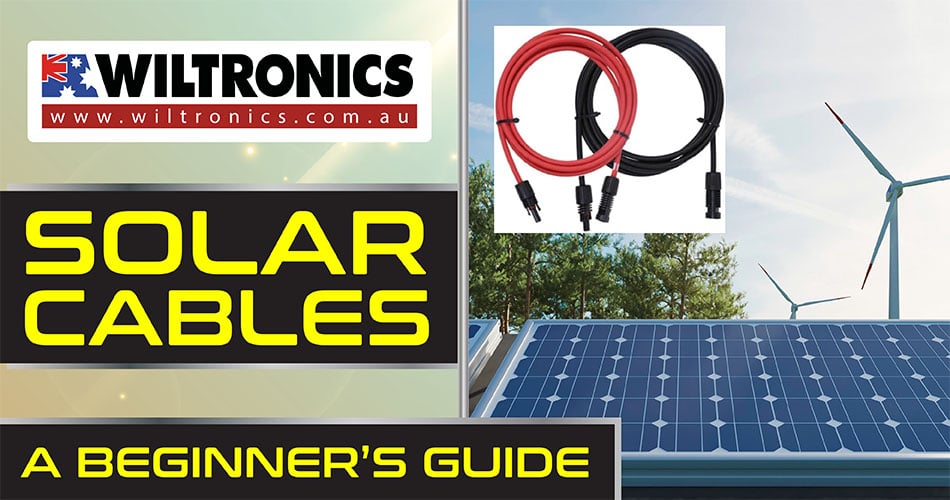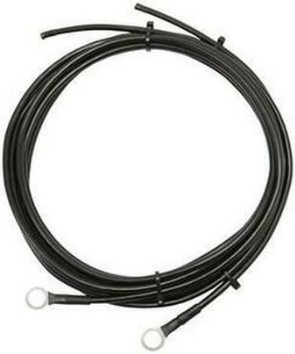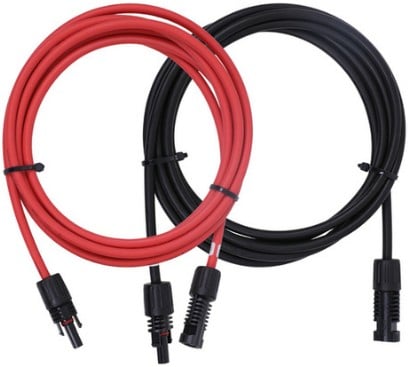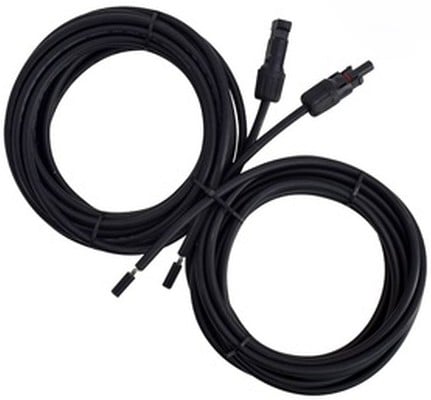Basics to Solar Cables: A Beginner's Guide
February 23, 2022

You may not know it, but solar cables are a critical part of a solar panel system.
In our previous post, we provided our readers with a handy guide to home solar panels. Here, we will continue the topic by providing you with a separate guide to solar cables.
Solar cables, as the name suggests, serve as a conduit where electricity travels. If you are new to photovoltaic systems, learning the basics is vital.
Keep reading to know more about this type of cable, including how they work, their purpose, and how to choose the right one.
Solar Cables in a Photovoltaic System
Wherever there is electricity, wire and cable must be present. A photovoltaic (PV) system is no exception.
Wires and cables play an important role in getting optimum performance from an electrical system. In a PV system’s case, the need for quality solar wires and cables becomes of utmost importance.
A photovoltaic system comprises one or more solar panels combined with an inverter and other hardware. It uses energy from the sun to generate electricity.
To get the most out of the sun, a PV system or a solar panel needs to be ‘complete’ to work in order. One of the important components needed is the solar cables.
What Are They?
Solar cables are designed to transfer DC solar energy across a PV system. They are used as interconnect cables for solar panels and PV arrays in a solar power grid.
They have the high mechanical strength to withstand severe weather conditions. In a solar project, solar cables are mostly laid outside and exposed to high temperatures.
They are likely to face the harsh elements during their long lifespan of around 20 to 25 years. Thus, it is important to equip your solar power system with high-quality solar wires and cables.
Classification of solar cables is based on the number of wires and their gauge. Plus, the diameter also depends on the number of wires and their gauge.
In general, there are three types of solar cables used in a PV system:
- DC solar cables
- Solar DC main cables
- Solar AC connection cables
Types of Solar Cables
In a solar power project, different types of cables are needed to do the work. Both DC and AC cables are used.
PV panels and inverters, including junction boxes, are connected via DC cable. Meanwhile, the inverter and the sub-stations are connected via AC cable.
1. DC solar cable
DC solar cables are single core copper cables with insulation and sheath. They are used within the PV solar panels and can either be module or string cables.
Further, they come with suitable connectors and are pre-built into the panels. Thus, you won’t be able to change them.
In some cases, you will need a string DC solar cable to connect it with other panels.
2. Solar DC main cable
Main DC cables are larger power collector cables. They connect the positive and negative cables from the generator junction box to the central inverter.
Moreover, they can either be single- or two-core cables. Single-core wires with double insulation are a practical solution that offers high reliability. Meanwhile, for wiring between the solar power inverter and generator connection box, two-core DC cables work best.
Experts usually favour DC main solar cable for outdoor installation. The sizes usually range from 2mm, 4mm and 6mm.
Tip: To avoid short circuit and grounding problems, lay cables carrying opposite polarities apart from each other.
3. AC connection cable
AC cable interconnects the solar power inverter to the protection equipment and electricity grid. For smaller PV systems with three-phase inverters, a five-core AC cable is used to connect to the grid.
The distribution of the wires is as follows:
- Three live wires for carrying electricity,
- and one each for ground and a neutral wire.
Tip: If your PV system has a single-phase inverter, use a three-core AC cable.
Importance of Solar Cables in a PV Project
As mentioned, solar cables transfer DC solar energy from one part of a PV device to another. Proper cable management is crucial when it comes to the safety and longevity of every PV system.
Cable installations in solar projects bear UV exposure, extreme temperatures, and air humidity. They withstand the PV system’s harsh requirements — both indoors and outdoors.
Further, these cables are not only sturdy but also weather-resistant. They can stand stress from pressure, bending, or stretching, and to chemical stress in the form of:
- Acids
- Alkaline solutions
- Saltwater
Thus, solar cables play an important role. Remember that regular cables cannot handle these harsh conditions, but solar ones can.
In short, solar cables are the main connecting elements that help the PV system function right.
Choosing the Right Solar Cables for Your PV System
Solar cables should be suitable enough for the most demanding PV system applications. Pick a model with the highest resistance to the atmospheric challenges, such as UV, ozone, and humidity.
Not only that, but the cables should also be able to withstand severe temperatures (-40°C to 120°C). Also abrasion, impact, tear, and pressure.
Further, the right solar cables should have the following features:
- Withstand mechanical stress such as compression, tension, bending and shear loads
- Acid and base proof
- High dielectric strength
- Flame retardant and halogen-free
- Small diameter
- Rodent and termite resistance
Ensuring the best quality standards is a must for the system, which has a life of over 25 years. Speaking of finding the top solar cable choices, look at our offers below!

1. Renogy Solar Cables – Charge Controller To Battery 2m
Product code: PL520x
The cable meets TUV standards for PV solar application. UV resistant and waterproof. Produces optimal power output even in high-temperature conditions.
Connects the battery and charge controller. Two gauge sizes to choose from with a 3/8 inch round centre hole.
Reliable quality: heat-shrink tubing insulates wires and provides abrasion resistance and electrical safety. Also made of pure copper.
The featured tin-plated copper terminals minimise corrosion. Plus, the pure oxygen-free copper wiring ensures maximum conductivity.

2. Renogy Solar Extension Cables With MC4 Connectors One Pair Red + Black
Product code: PL5206
These solar extension cables let you make spatial adjustments to your PV system. They connect the solar panel and charge controller (or two solar panels), allowing for more space between them.
This unit allows for greater customisation of the solar power system.

3. Solar Adaptor Kit – Cables Connecting Solar Panel to Controller
Product code: PL5204
The perfect pair of wires for connecting a solar panel to a charge controller. The Kit has MC4 connectors on one end for easy connection to the solar panel.
The other end has an exposed wire to connect to the charge controller directly. The wiring is weatherproof and built to withstand extreme temperatures.
It is ideal for Off-Grid Kits with power outputs ranging from 100W to 400W. The various sizes allow for customisation based on a customer’s specific requirements.
4. 2m Premade PV Power Cable with MC4 Socket to Bare End
No longer available
Product code: JWH312x
This 2m Premade PV Power Cable has a standard MC4 PV plug or socket at the end. It will save the hassle of crimping an MC4 connector. The other end is bare tinned wire to connect to a solar controller or other solar hardware.
The Bottom Line
The quality, safety, and profitability of a PV system depends on the workmanship and the efficiency of its components. Thus, proper wiring in a solar installation is a crucial step.
Professionals use these cables to interconnect solar panels and other PV system components. And choosing the right cable model is critical to a project functioning properly and remaining undamaged.
Solar PV systems have a lifespan of more than 25 years. Therefore, sourcing cables from licensed and accredited manufacturers are important to ensuring quality and safety.
We hope our guide will help you understand more about solar cables and find the right model for your PV system!
© Electrotech Brands Pty Ltd 2022


Write a Comment
You must be logged in to post a comment.